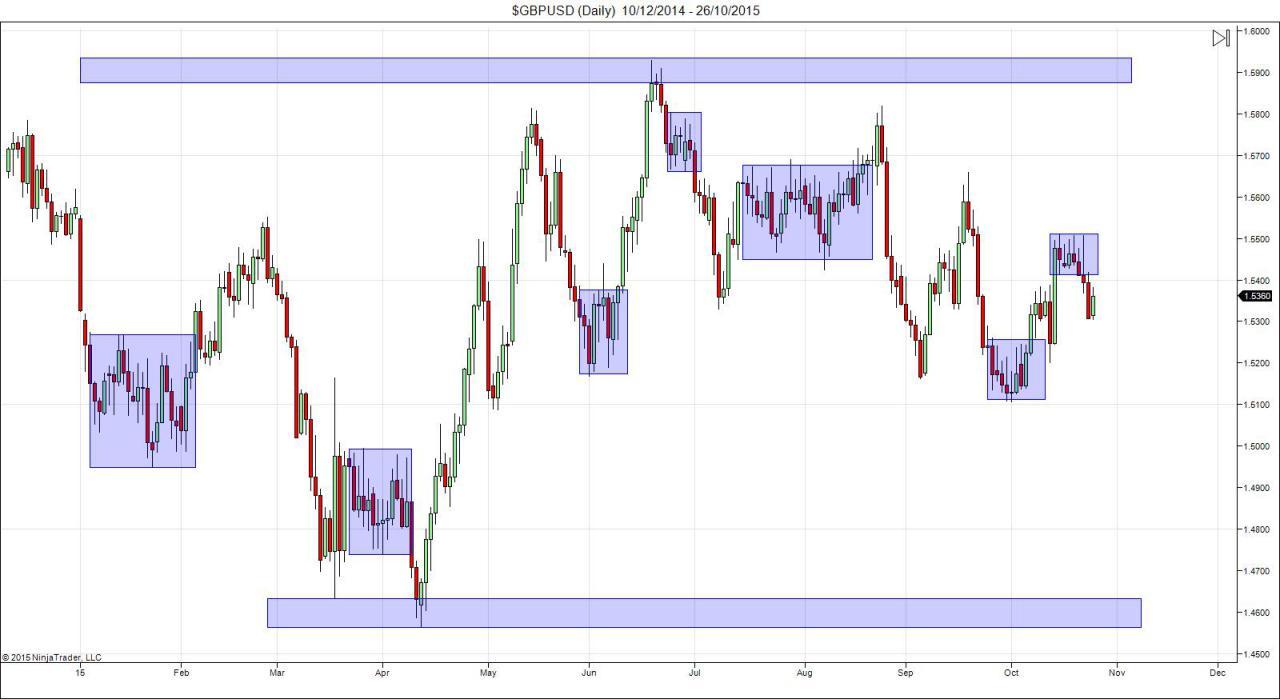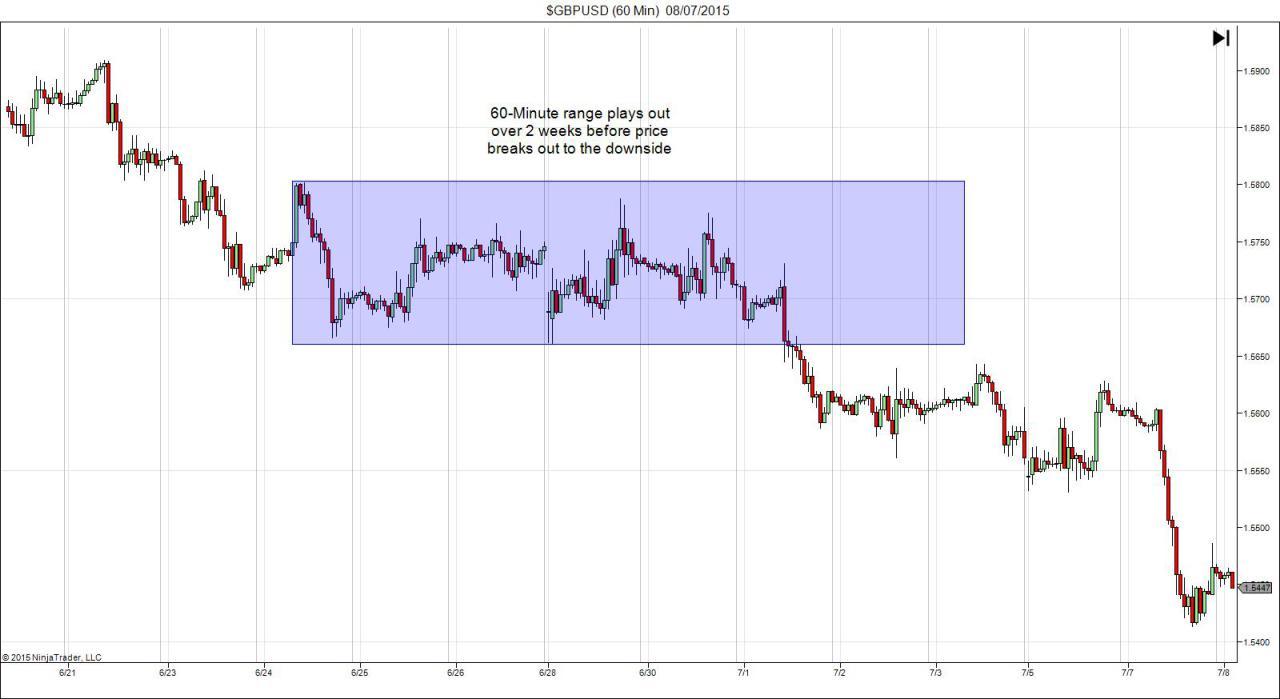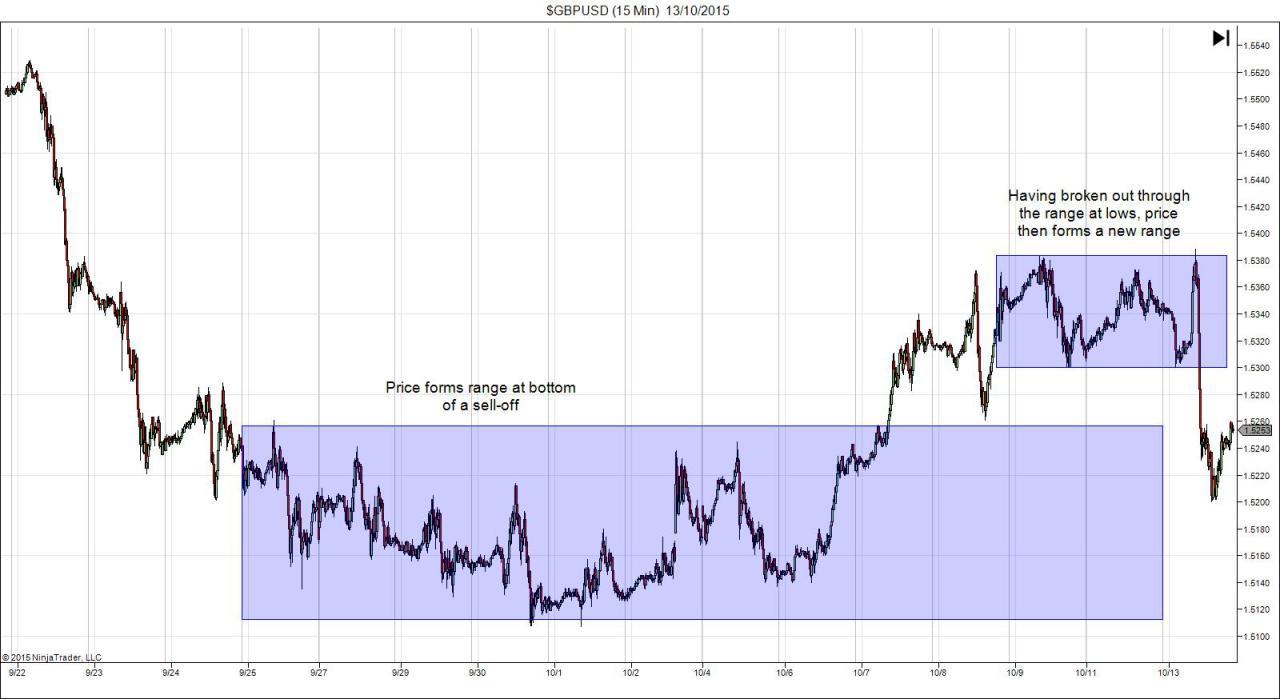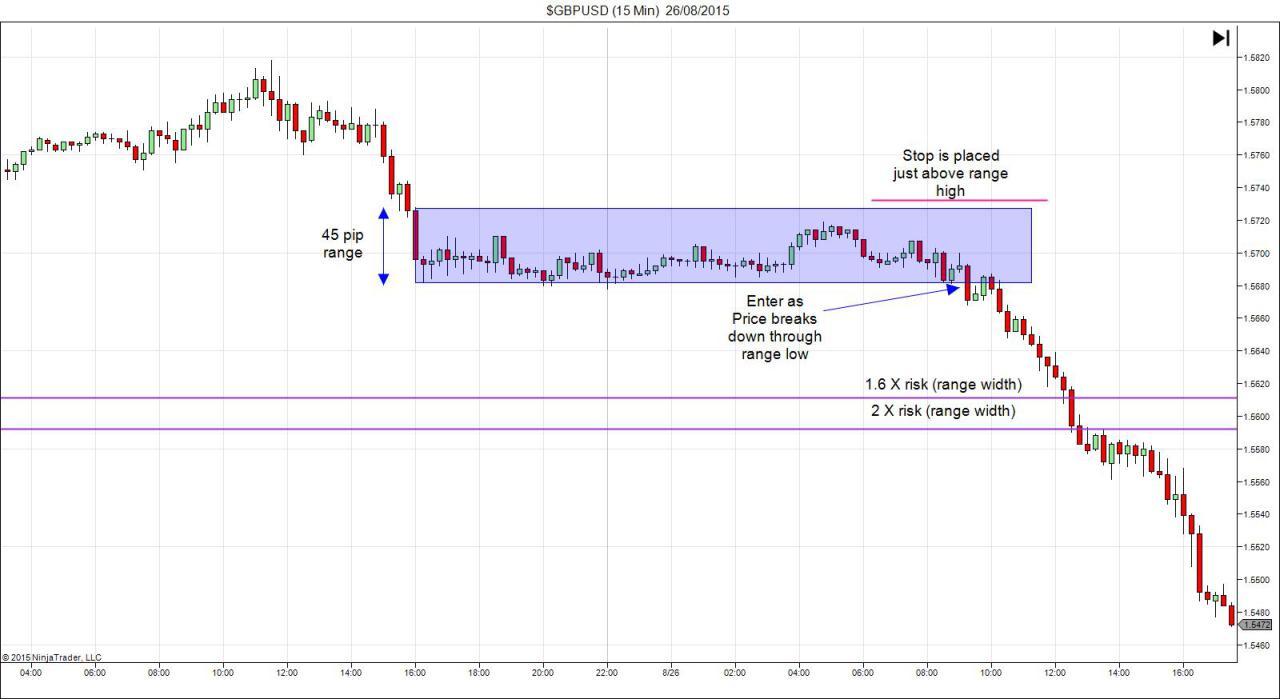The Breakout Method
One of the most popular trading strategies commonly used by all variety of traders is the “breakout trading” method. Many automated systems and indeed successful hedge fund strategies are based on this simple approach.
Perhaps the most attractive aspect of this trading method is that it can be used with consistent success on any time-frame and can largely be applied to all market conditions. So let’s break down exactly what the breakout method is and discuss how you can build this popular trading style into your trading arsenal.
The method itself is very simple and requires only that traders observe a specific price reaction at specific levels. Traders look to define a trading range as identified by a reference low and high point and then simply enter a trade as price breaks through either of these levels.
Now obviously, as with all trading strategies, it is a little more difficult in practice than in theory and really one of the keys to success in using this method is how you define the trading range and the reference high and low point.
There are many ways to define trading ranges from simple time based ranges (e.g the high and low of the last 20 day or the last 30 minutes) through to looking to identify consecutive breaks of highs and lows.
Let’s take a look at some examples to better explain what we mean when we talk about trading ranges.

In the example above of GBPUSD over 2015 so far we can see highlighted at the top of the chart the 2015 range high and highlighted along the bottom of the chart the 2015 range low. So in terms of a yearly range, those levels mark the GBPUSD 2015 range.
However, within the overall range that price has been contained within we can also identify several smaller ranges that would have been important on the lower timeframes, contained price for day, sometimes weeks at a time.
The image below shows the range that forms just under the 2015 range high, as shown on a 60-minute chart.

A common method for breakout trading is to identify ranges on the lower timeframes using recent highs and lows on the 15 minute chart and trading the subsequent breakouts.

In the image above you can see how following a sell-off, GBPUSD forms a range at lows and then once it breaks out through the range high, price forms another range.
There is actually important information contained in this picture, though you might not realise it yet. You see, what this picture actually demonstrates is an example of the typical price action dynamic we see whereby the market tends to move in short impulsive bursts followed by periods of consolidation. Understanding this market flow is key to success in trading break-outs. Whilst you can certainly be fairly successful just through getting good at identifying the ranges themselves, learning to understand the rhythm of the market and the context of these ranges can amplify your success.
So how then do we actually trade the breakout? Well although there are many different strategies employed in this style of trading, in its simplest form the strategy is as follows.
Enter a trade as price breaks through the range, place stop just behind the opposite side of the range, and target 2 times the width of the range.
Let’s look at an example to make this clear.

In the example above we see price sell-off and then for a consolidation range. We then see price break-down through the range low at which point we enter short. We place our stop just above the range high and our target is marked as twice the width of the range.
So you can see the method is very simple and straightforward to follow. You might wish to alter this method slightly. For example, you could think that when price hits the 2 times range target you will trail your stops to lock in profits but allow the trade the chance to run on further. Perhaps you could bank half your position and leave a runner
Entry Options
An important consideration, and one that really comes down to your own personal risk preference, is whether you enter the trade simply as price is breaking out, mid-candle, or wait for a candle close to confirm.
So which is best?
Well they both have pros and cons. Obviously, entering as price breaks out is slightly more aggressive and leaves you open to trading “false breaks” whereby price breaks out only to reverse back within the range. However, entering in this manner also guarantees you more profits if you are correct in your assessment of the breakout allowing you to catch the full tun.
Alternatively, waiting for the candle to close outside of the range gives slightly more confirmation that a proper break-out is likely to happen and helping to avoid many false breaks. However, the issue here is that as breakouts tend to be explosive, waiting for the candle to close might mean that you miss the majority of the move and end up entering as price is quite extended, creating higher risk of price reversing and also requiring a larger stop. Again, how you choose to execute this trade will require you to do your homework and pick the method that suits you best, but there are many successful break-out traders using each method.
This market forecast is for general information only. It is not an investment advice or a solution to buy or sell securities.
Authors' opinions do not represent the ones of Orbex and its associates. Terms and Conditions and the Privacy Policy apply.
Trading foreign exchange on margin carries a high level of risk, and may not be suitable for all investors. Before deciding to trade foreign exchange, you should carefully consider your investment objectives, level of experience, and risk appetite. There is a possibility that you may sustain a loss of some or all of your investment and therefore you should not invest money that you cannot afford to lose. You should be aware of all the risks associated with foreign exchange trading, and seek advice from an independent financial advisor if you have any doubts.
Editors’ Picks
AUD/USD remained bid above 0.6500

AUD/USD extended further its bullish performance, advancing for the fourth session in a row on Thursday, although a sustainable breakout of the key 200-day SMA at 0.6526 still remain elusive.
EUR/USD faces a minor resistance near at 1.0750

EUR/USD quickly left behind Wednesday’s small downtick and resumed its uptrend north of 1.0700 the figure, always on the back of the persistent sell-off in the US Dollar ahead of key PCE data on Friday.
Gold holds around $2,330 after dismal US data

Gold fell below $2,320 in the early American session as US yields shot higher after the data showed a significant increase in the US GDP price deflator in Q1. With safe-haven flows dominating the markets, however, XAU/USD reversed its direction and rose above $2,340.
Bitcoin price continues to get rejected from $65K resistance as SEC delays decision on spot BTC ETF options

Bitcoin (BTC) price has markets in disarray, provoking a broader market crash as it slumped to the $62,000 range on Thursday. Meanwhile, reverberations from spot BTC exchange-traded funds (ETFs) continue to influence the market.
US economy: slower growth with stronger inflation

The dollar strengthened, and stocks fell after statistical data from the US. The focus was on the preliminary estimate of GDP for the first quarter. Annualised quarterly growth came in at just 1.6%, down from the 2.5% and 3.4% previously forecast.
RECOMMENDED LESSONS
Making money in forex is easy if you know how the bankers trade!
Discover how to make money in forex is easy if you know how the bankers trade!
5 Forex News Events You Need To Know
In the fast moving world of currency markets, it is extremely important for new traders to know the list of important forex news...
Top 10 Chart Patterns Every Trader Should Know
Chart patterns are one of the most effective trading tools for a trader. They are pure price-action, and form on the basis of underlying buying and...
7 Ways to Avoid Forex Scams
The forex industry is recently seeing more and more scams. Here are 7 ways to avoid losing your money in such scams: Forex scams are becoming frequent. Michael Greenberg reports on luxurious expenses, including a submarine bought from the money taken from forex traders. Here’s another report of a forex fraud. So, how can we avoid falling in such forex scams?
What Are the 10 Fatal Mistakes Traders Make
Trading is exciting. Trading is hard. Trading is extremely hard. Some say that it takes more than 10,000 hours to master. Others believe that trading is the way to quick riches. They might be both wrong. What is important to know that no matter how experienced you are, mistakes will be part of the trading process.

